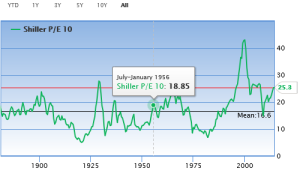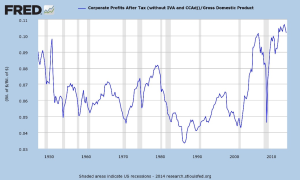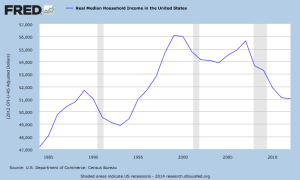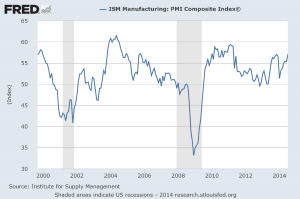Modern markets can seem to operate in a sphere of their own, divorced from the real economy and the real world. Plus, the process of investing has become more systematized and abstract over the last couple of decades – with the theory and jargon of the business often conveying a sense of false precision about the behavior of markets.
As a portfolio manager and former head of U.S. equity research at Fidelity, Katherine Collins felt those disconnections and yearned for a broader perspective. Her radical career shift – heading off to Harvard Divinity School – left her co-workers and others surprised. How could she leave the exciting business of investing?
As Collins told a recent meeting of CFA Society Minnesota, she never abandoned her love for investing. But she wanted to find a new context for her decision making, and her experience at divinity school, the Santa Fe Institute, and the Biomimicry Institute led her to use the lessons of nature to approach the challenges of investment analysis.
Her insights can be found in a new book, The Nature of Investing: Resilient Investment Strategies through Biomimicry, and she formed Honeybee Capital to produce research using her approach. (More information can be found in an interview with Collins in CFA Institute Magazine.)
Many of the precepts that Collins discussed involved cutting through the complexity of the investment conventions of today with simple concepts inspired by nature. She talked about the honeybees which gave her firm its name, pointing out how they cooperate to share information “openly and without spin.” When faced with a problem, they head out into the world to observe and then work together toward an optimal solution. Contrast that with many investment decision makers, laboring away alone in their offices, looking at the world through digital windows.
In fact, for people of a certain age, one of Collins’ examples was particularly apt. Back in the day when not everyone had a Quotron (the dominant electronic data platform then), they used shared terminals in common areas. That had at least two positive effects: co-workers rubbed shoulders more often and got to know each other better, strengthening the teamwork in the organization, and they shared information about their respective areas of expertise, resulting in a cross-pollination of ideas that yielded new insights. According to Collins, “the inefficiency of the Quotron was what made it so special.”
Yes, “we have become tools of our tools,” that derivation of a Thoreau quote being one of many that Collins used to show how the challenges we face aren’t exactly new (although with amped-up tools we probably have amped-up challenges). We feel like we have all of the answers at our fingertips, but only to certain questions, and probably not the key ones.
For Collins, the most important result of her inquiry into biomimicry is that it helps her to ask better questions about the investment process. She gave a number of examples of unusual adaptations among species that led her to see an investment dilemma in a new light.
The biggest issue that we confront is “risk” versus “uncertainty.” The former is bounded by the parameters of our experience, and the investment world has turned it into an apparent science. Risk equals standard deviation (although that’s a very unusual definition) and the language of risk in that sense has become universal, driving the investment framework for everyone from individuals to massive institutions. This “land of risk” is mapped and quantified – and our tools are honed to guide us within the normality that we think exists.
But the “sea of uncertainty” is something else again. It’s ironic that the financial crisis caused the risk culture to become even more entrenched; it should have exposed the shortcomings of that framework for dealing with unanticipated situations. Collins thinks that those who tread the land of risk (an overwhelming percentage of investment professionals these days) are least equipped to navigate on the sea of uncertainty. To survive in the entire range of environments, we need people that come at decisions from other directions – and ask those better questions – rather than trying to outthink and out-model everyone else.
Speaking of thinking, Collins grew up with one mantra ever-present in her life: “Think.” Her father worked for IBM, so she couldn’t get away from that famous slogan from founder Thomas Watson. But it’s easy to get lost in your own thoughts (sitting in your office with your electronic tools) or to get caught up in the conventional thinking about an investment question.
Thinking differently is essential (yet difficult), and Collins says we need better systems for approaching problems and better conversations about them. Long-term perspective is needed to succeed in a world driven by short-term performance.
That demands a reengagement with realms beyond the echo chamber of the investment business. In many ways, we have become removed from the reality of our decisions. A stock is not a blip on a screen but an economic interest in a company. As someone schooled in fundamental analysis, Collins stressed the importance of understanding the culture of a firm, and “you can’t do it in ten minutes.” You also can’t capture the world with a bunch of statistics, although they are an important part of the information mosaic (just not as important as we’ve come to believe).
Collins is an engaging speaker, sharing insights from within the investment business and from outside of it, and effectively connecting the two. You can’t help but think that you’d want her around the table the next time you had a tough issue to address – or when you needed reminding that sometimes you have to take a step out into the real world to see things in new ways.





